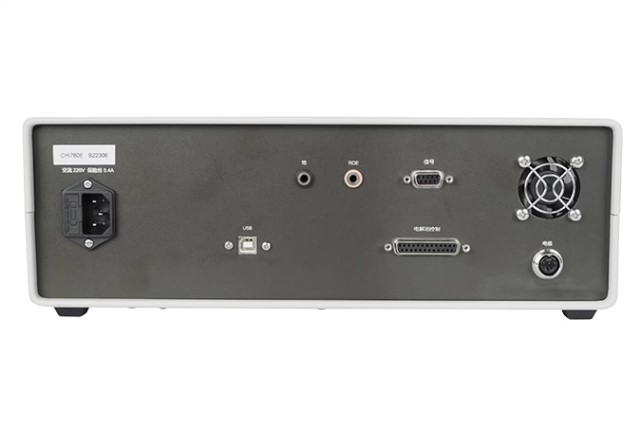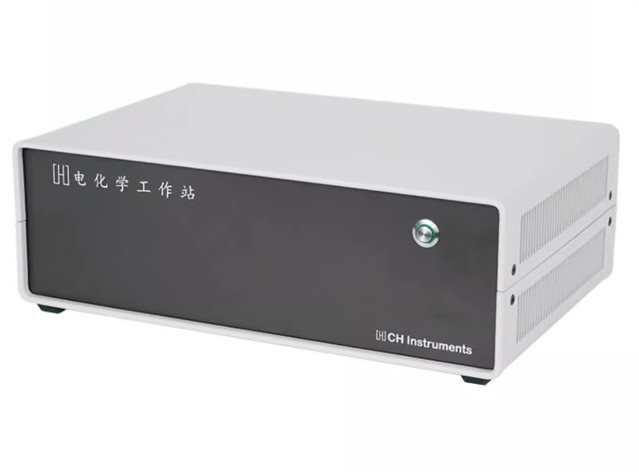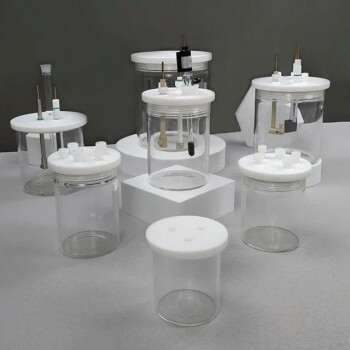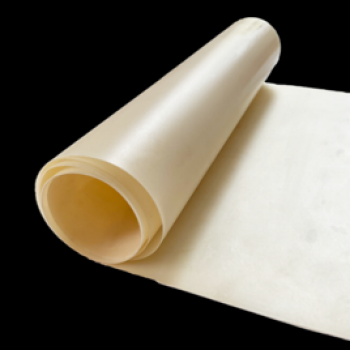
battery material
Lab Electrochemical Workstation Potentiostat for Laboratory Use
Item Number : KT-CHIP
Price varies based on specs and customizations
- Constant current range
- 3 nA – 250 mA
- Maximum potential range
- ±10V
- Reference electrode input impedance
- 1e12 ohms
Shipping:
Contact us to get shipping details Enjoy On-time Dispatch Guarantee.
Why Choose Us
Reliable PartnerEasy ordering process, quality products, and dedicated support for your business success.
Introduction
An electrochemical workstation, also known as a laboratory electrochemical analyzer or electromagnetic detection equipment, is a sophisticated apparatus designed for the study of electrochemical reactions. It typically consists of a working electrode where the reactions of interest occur, a reference electrode for measuring the potential of the working electrode, and an auxiliary electrode to complete the cell circuit. These components enable a range of experiments, including linear sweep voltammetry and step experiments, which are crucial for understanding multi-electron processes, electron transfer kinetics, and reaction mechanisms.
- Electroanalytical Chemistry: The workstation is essential for conducting linear sweep voltammetry, step experiments, and other electrochemical analyses that help in the study of multi-electron processes, slow electron transfer kinetics, adsorption/desorption steps, and electrochemical reaction mechanisms.
- Material Science: It is employed to characterize the properties of new materials, especially those intended for use in batteries, fuel cells, and other energy storage devices, by measuring their electrochemical response.
- Environmental Monitoring: The workstation can be used to develop and test sensors for detecting pollutants in water and air, providing critical data for environmental protection efforts.
- Biological and Medical Research: It aids in the study of biological molecules, such as proteins and enzymes, by enabling the measurement of their electrochemical properties, which is vital for drug discovery and understanding biological processes.
- Industrial Quality Control: In manufacturing, the workstation helps in ensuring the quality of products by analyzing the electrochemical behavior of materials used in various applications, from coatings to electronic components.
Detail & Parts



Push button switch
Simple switch panel

Power interface
With USB communication cable
Fuse 0.4A

Cooling fan
Electrolytic cell control + signal interface
Cooling outlet to prevent overheating of the instrument
Technical parameters
The CHI600E series is a general-purpose electrochemical measurement system. The CHI600E series instruments integrate almost all commonly used electrochemical measurement techniques. In order to meet different application needs and funding conditions, the CHI600E series is divided into multiple models. CHI602E and CHI604E can be used for corrosion research, and CHI660E is a more advanced electrochemical workstation.
| Model | CHIP600E/CHIP602E/CHIP604E/CHIP610E/CHIP620E/CHIP630E/CHIP650E/CHIP660E |
| Maximum potential range | ±10V |
| Maximum current | ±250mA continuous, ±350mA peak |
| Cell voltage | ±13V |
| Constant current range | 3nA–250mA |
| Reference electrode input impedance | 1e12 ohms |
| AC impedance | 0.00001 ~ 1MHz |
| Input bias current | <20pA |
| CV and LSV scan speed | 0.000001V/s ~ 10,000V/s |
| Pulse width for CA and CC | 0.0001 ~ 1000sec |
| Minimum sampling interval for CA and CC | 1ms |
The CHI700E series is a general purpose dual potentiostat that can simultaneously control the potential of two working electrodes in the same electrolytic cell. When the CHI700E series is used as a single potentiostat, its performance is the same as the CHI600E series. If connected to the CHI200B microcurrent amplifier and shielding box, the first channel can measure currents of 1pA or less. The CHI700E can also be connected to the CHI680B high current amplifier to obtain higher currents and cell voltages, but it can only be used for single channel measurements.
| Model | CHIP700E/CHIP710E/CHIP720E/CHIP730E/CHIP7500E/CHIP760E |
| Maximum current | ±250 mA continuous (sum of both channels), ±350 mA peak |
| Cell voltage | ±13 V |
| Current range | 3 nA – 250 mA |
| Potentiostat rise time | less than 1 ms, typically 0.8 ms |
| Potentiostat bandwidth (-3 dB) | 1 MHz |
| Reference electrode input impedance | 1e12 ohms |
| CV and LSV scan speed | 0.000001 V/s to 10,000 V/s, dual channel simultaneous scan and sampling to 10,000 V/s |
| Pulse width for CA and CC | 0.0001 ~ 1000 sec |
| Minimum sampling interval for CA | 1 ms, dual channel simultaneous |
| Pulse width for DPV and NPV | 0.001 ~ 10 sec |
| SWV frequency | 1 ~ 100 kHz |
Advantages
- Cost-Effective and Adaptable: These instruments offer a cost-effective solution for electrochemical analysis while being adaptable to various experimental setups and research needs.
- Open Frame Design: The open frame design of some models enhances manageability and accessibility for maintenance and customization.
- Three-Electrode System for Precision: The standard three-electrode setup, including a reference electrode, working electrode, and counter electrode, ensures stable and accurate measurements in electrochemical reactions.
- Influence of Electrode Material and Nanotechnology: The choice of electrode material and surface modifications, along with the integration of nanotechnology, significantly enhances the sensitivity and performance of electrochemical biosensors.
- Breakthrough in Biosensor-Based Systems: The synergy between nanotechnology and bioelectronics has led to significant advancements in biosensor-based systems, making electrochemical workstations at the forefront of analytical technology.
Application scenarios
Widely used in electrochemical analysis




Designed for You
KinTek provide deep custom made service and equipment to worldwide customers, our specialized teamwork and rich experienced engineers are capable to undertake the custom tailoring hardware and software equipment requirements, and help our customer to build up the exclusive and personalized equipment and solution!
Would you please drop your ideas to us, our engineers are ready for you now!
FAQ
What Is An Electrochemical Workstation And What Does It Do?
What Are The Applications Of Electrolytic Cells?
Can You Explain The Different Types Of Electrochemical Cells?
Are There Alternative Tools To Electrochemical Workstations For Elemental Analysis?
What Is The Function Of Auxiliary Electrode?
What Is A Thermal Element?
What Are The Materials Used In Electrochemical Cell?
What Is The Difference Between Auxiliary And Reference Electrode?
How Does A Thermal Element Work?
What Are The Examples Of Electrochemical Material?
What Materials Are Commonly Used For Auxiliary Electrodes?
What Are The Advantages Of Using Thermal Elements?
How Do Auxiliary Electrodes Affect The Performance Of An Electrochemical Cell?
What Are The Different Types Of Thermal Elements?
Why Are Auxiliary Electrodes Necessary In Electrochemical Systems?
How Should Thermal Elements Be Calibrated And Maintained?
Are There Any Limitations Or Considerations When Using Auxiliary Electrodes?
4.8
out of
5
Impressive speed of delivery and great value for money. The quality and durability are top-notch!
4.7
out of
5
Exciting technological advancement and impeccable quality. Worth every penny!
4.9
out of
5
Outstanding quality and durability. The technological features are truly advanced and reliable.
4.8
out of
5
Great value for money with high-quality performance. It's a reliable and durable product.
4.7
out of
5
Remarkable technological advancement and excellent value for money. The quality is unmatched!
4.9
out of
5
Superb delivery speed and exceptional quality. The technological features are impressive.
4.8
out of
5
Incredible value for money with top-notch quality and durability. Highly advanced technological features make it exceptional!
4.7
out of
5
Satisfying technological advancement, excellent value for money, and durable quality. A great investment!
4.9
out of
5
Very impressed with the quality and durability. The technological features are cutting-edge and worth every penny.
4.8
out of
5
Highly satisfied with the value for money. The quality and technological features are exceptional.
4.7
out of
5
The technological advancement is remarkable. Great value for money and reliable quality.
4.9
out of
5
Quality, durability, and technological features are all top-notch. The value for money is excellent.
REQUEST A QUOTE
Our professional team will reply to you within one business day. Please feel free to contact us!
Related Products

Electrolytic Electrochemical Cell with Five-Port
Streamline your laboratory consumables with Kintek's Electrolytic Cell with five-port design. Choose from sealed and non-sealed options with customizable electrodes. Order now.

Efficient split chamber CVD furnace with vacuum station for intuitive sample checking and quick cooling. Up to 1200℃ max temperature with accurate MFC mass flowmeter control.

Warm Isostatic Press WIP Workstation 300Mpa for High Pressure Applications
Discover Warm Isostatic Pressing (WIP) - A cutting-edge technology that enables uniform pressure to shape and press powdered products at a precise temperature. Ideal for complex parts and components in manufacturing.

Multifunctional Electrolytic Electrochemical Cell Water Bath Single Layer Double Layer
Discover our high-quality Multifunctional Electrolytic Cell Water Baths. Choose from single or double-layer options with superior corrosion resistance. Available in 30ml to 1000ml sizes.

Elevate your electrochemical research with our Rotating Disk and Ring Electrodes. Corrosion resistant and customizable to your specific needs, with complete specifications.

Rotating Platinum Disk Electrode for Electrochemical Applications
Upgrade your electrochemical experiments with our Platinum Disc Electrode. High-quality and reliable for accurate results.

Anion Exchange Membrane for Laboratory Use
Anion exchange membranes (AEMs) are semipermeable membranes, usually made of ionomers, designed to conduct anions but reject gases such as oxygen or hydrogen.
Related Articles

Advanced Techniques in Coating Evaluation Using Electrolytic Cells
Explore the comprehensive guide on coating evaluation using electrolytic cells, covering electroplating, sol-gel methods, and wet chemical techniques. Enhance your understanding of metal coating properties and applications.

Revolutionizing Quality Control: The Ultimate Guide to Handheld Lithium Battery Analyzers
Explore the advanced features and applications of handheld lithium battery analyzers, including 24/7 operation, fast analysis, and precise elemental composition. Ideal for mass production and quality control in various industries.

Comprehensive Guide to Handheld Lithium Battery Analyzers: Features, Applications, and Maintenance
Explore the advanced capabilities of handheld lithium battery analyzers, including their use in quality control, recycling, and resource analysis. Learn about daily maintenance and industry applications.

Exploring the Multifunctional Electrolytic Cell Water Bath: Applications and Benefits
Discover the versatile applications of multifunctional electrolytic cell water baths in various industries. Learn about their benefits, components, and how they facilitate chemical reactions and temperature control.

Comprehensive Guide to Rotating Disk Electrode (RDE) in Electrochemical Studies
Explore the detailed workings, applications, and significance of Rotating Disk Electrodes (RDE) in electrochemical research. Discover how RDEs are used in fuel cells, catalyst development, and more.

Understanding Saturated Calomel Reference Electrodes: Composition, Uses, and Considerations
Explore the detailed guide on saturated calomel reference electrodes, including their composition, advantages, disadvantages, and applications. Ideal for researchers and lab technicians.

Ultimate Guide to Handheld Alloy Analyzers: Features, Applications, and Advantages
Explore the world of handheld alloy analyzers, their applications in various industries, and the benefits they offer. Discover how these devices provide rapid, accurate, and non-destructive analysis for quality control and material verification.

The Architecture of Certainty: Mastering Control in Multifunctional Electrolytic Cells
Precision in electrochemistry isn't about guesswork; it's about hardware architecture. Learn how the three-electrode system isolates variables for true control.

Comprehensive Guide to Handheld Soil Analyzers: Features, Benefits, and Applications
Explore the capabilities of Handheld Soil Analyzers like AXR600, their role in rapid on-site soil screening, and how they minimize analysis costs and time. Ideal for environmental monitoring and remediation.

Comprehensive Guide to Reference Electrodes: Types, Applications, and Selection Criteria
Explore the world of reference electrodes with our detailed guide. Learn about different types, their applications, and how to select the right one for your needs. Ideal for researchers and lab technicians.

Comprehensive Guide to Handheld Precious Metal Analyzers: Features, Applications, and Benefits
Explore the advanced capabilities of handheld precious metal analyzers like XRF 990 and XRF 200, their applications in jewelry testing, recycling, and quality control, and how they offer fast, accurate, and non-destructive analysis of precious metals.

Comprehensive Guide to Handheld Alloy Analyzers: Features, Applications, and Benefits
Explore the advanced features, wide-ranging applications, and significant benefits of handheld alloy analyzers. Learn how these devices revolutionize alloy analysis with fast, accurate, and non-destructive testing methods.